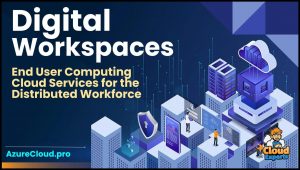 The rise of remote work is transforming how and where work is done.
The rise of remote work is transforming how and where work is done.
Technology enables seamless collaboration across geographies, allowing for greater flexibility and work-life balance. Organizations are rethinking traditional office setups and embracing remote work as a permanent feature.
The ‘Future of Work’ is such a potent topic as it spans multiple dimensions, of a major evolution of cultural, business and technological trends.
With the advent of the Metaverse our futures may see an entirely immersive virtual environment for our office work, a world where you could have a beach-side conversation with your colleagues, taking meeting notes while floating around a space station.
McKinsey asks ‘What is the Future of Work?’ and explores a detailed analysis of these trends, where they foresee a decline in middle- and low-skill jobs such as food service, production work, or office support roles, with job growth concentrated in high-skill jobs, for example, in healthcare or science, technology, engineering, and STEM fields.
For more immediate, practical considerations there is the very tense tug of war between belief systems, between those that think working from home is an essential dynamic for modern organizations, versus those who insist it is still essential for employees to be present in the office.
Linkedin reported that the ‘Remote vs in-office battle continues‘. For some sectors like tech it’s increasingly becoming seen as the norm for an employed engagement; many leaders recognizing simple ideals like how remote workers outperform office workers.
 Future Work Architecture
Future Work Architecture
This future is explored and documented by Microsoft in their research paper: “The New Future of Work“. They describe how Covid-19 forced a reevaluation of what work is, and where it is conducted.
The research has focused on two major trends of change in office working: Remote, hybrid working and Artificial Intelligence.
They identified that an organization’s culture is a key enabler for change (McKinsey & Company, 2021) and it must support virtual teams, where employees should be encouraged to work collaboratively, even when geographically dispersed.
It is further explored in detail across a series of videos from the research team, which defines the series of components to realize a Future Work strategy:
- Team Collaboration – Great collaboration requires thoughtful choices that improve (or eliminate) meetings. Discover how we can use technology like video and AR/VR more intentionally—reducing employee stress and security challenges.
- Hybrid Workspaces – By one rule of thumb, workspace expenses equal 10% of wage costs, which means well-crafted workplaces that boost productivity can pay for themselves. Discover how blended spaces can optimize teamwork and efficiency.
- Asynchronous collaboration – People spend 250% more time in meetings than before the remote work transition. Discover how asynchronous collaboration can help workers get what they need to stay productive—even when they choose to skip a meeting.
- Individual Productivity and Well-Being – Many people feel more productive working remotely, but nearly as many prefer working onsite. There’s no one-size-fits-all answer. Discover how a hybrid approach can boost productivity.
- Organizational Well-Being – People who feel valued at work are less likely to suffer burnout or quit. Discover how enthusiastic workers in a strong workplace culture can help an organization flourish.
- AI-powered Social Platforms – AI-curated online communities can break down workplace siloes and improve knowledge sharing—leading to happier employees. Discover how enterprise social platforms can jumpstart innovation and boost the bottom line.
EUC Infrastructure – Empowering the Hybrid Workforce
As Lloyds Bank describes the key motivation for virtual desktops is this new normal of a highly distributed workforce, with the primary motivations being enabling a distributed hybrid workforce, and providing them access to tools like Microsoft Teams.
Lloyds has staff and partners all over the world who need to access their business applications, but their previous Citrix-based VDI platform was centralized and on-premise, causing them performance and cost issues.
Moving to a Cloud native approach with Azure Virtual Desktop has streamlined the cost base and also enhanced performance for all global users, and furthermore integrates naturally with their very popular use of Microsoft 365 across the enterprise.



